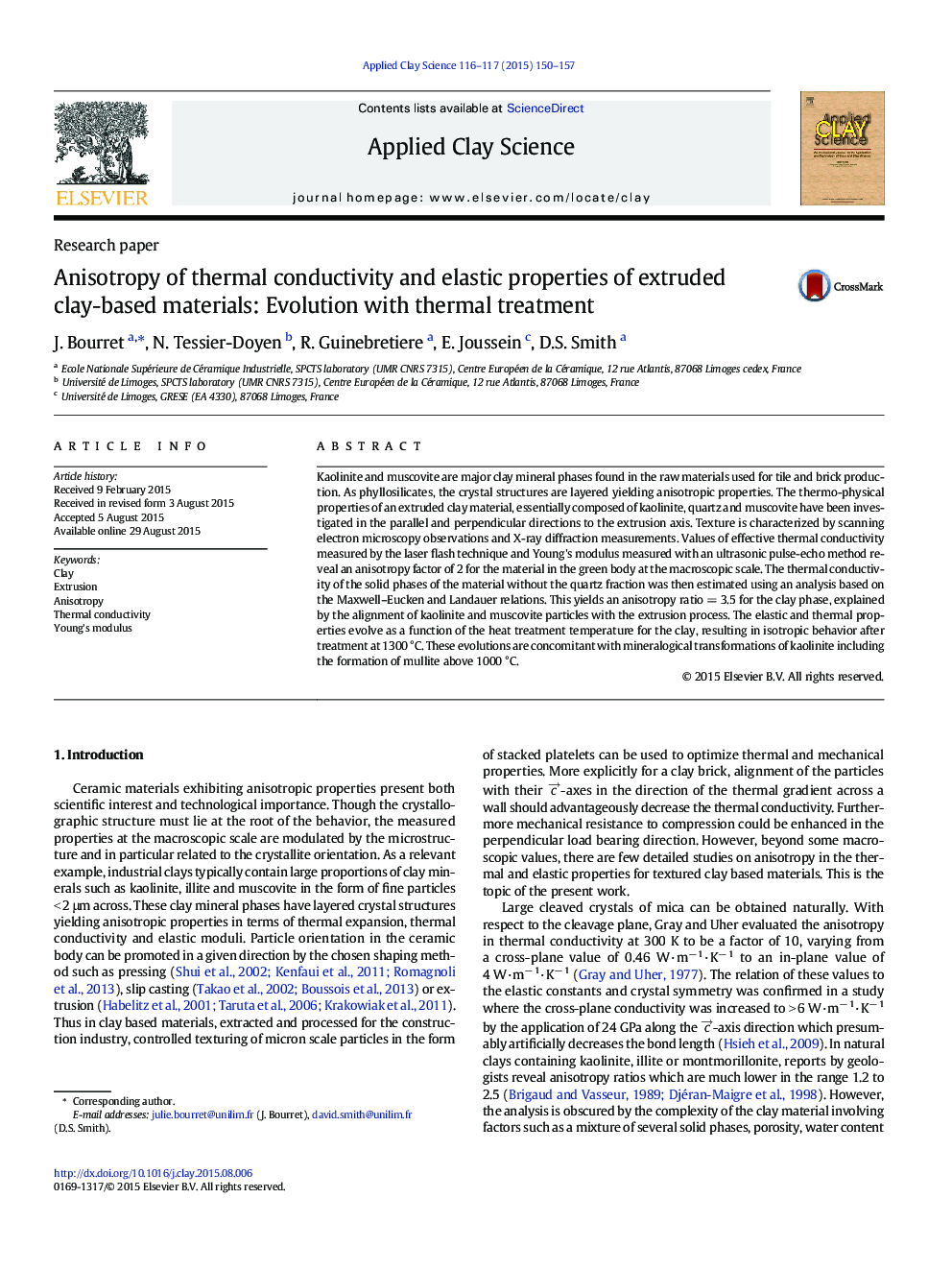| کد مقاله | کد نشریه | سال انتشار | مقاله انگلیسی | نسخه تمام متن |
|---|---|---|---|---|
| 1694471 | 1519065 | 2015 | 8 صفحه PDF | دانلود رایگان |

• Extruded clay bodies are anisotropic for thermal conductivity and Young's modulus.
• The thermal conductivity anisotropy factor is about 3 for green bodies at 25 °C.
• Mineralogical transformations modify the anisotropy in the physical properties.
• Anisotropy at the macroscopic scale is removed by heat treatments up to 1300 °C.
• Treatment of clay at 700 °C yields a minimum conductivity close to 0.5 W·m− 1·K− 1.
Kaolinite and muscovite are major clay mineral phases found in the raw materials used for tile and brick production. As phyllosilicates, the crystal structures are layered yielding anisotropic properties. The thermo-physical properties of an extruded clay material, essentially composed of kaolinite, quartz and muscovite have been investigated in the parallel and perpendicular directions to the extrusion axis. Texture is characterized by scanning electron microscopy observations and X-ray diffraction measurements. Values of effective thermal conductivity measured by the laser flash technique and Young's modulus measured with an ultrasonic pulse-echo method reveal an anisotropy factor of 2 for the material in the green body at the macroscopic scale. The thermal conductivity of the solid phases of the material without the quartz fraction was then estimated using an analysis based on the Maxwell–Eucken and Landauer relations. This yields an anisotropy ratio = 3.5 for the clay phase, explained by the alignment of kaolinite and muscovite particles with the extrusion process. The elastic and thermal properties evolve as a function of the heat treatment temperature for the clay, resulting in isotropic behavior after treatment at 1300 °C. These evolutions are concomitant with mineralogical transformations of kaolinite including the formation of mullite above 1000 °C.
Journal: Applied Clay Science - Volumes 116–117, November 2015, Pages 150–157